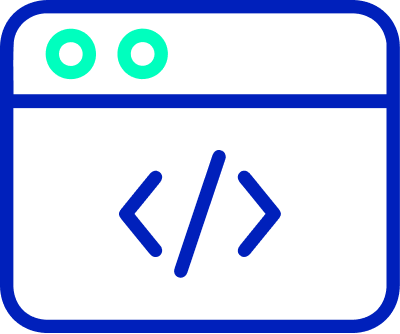Key Takeaways:
- Meticulous software architecture design helps preempt development slowdowns and post-deployment failures.
- GenAI can provide brilliant ideas for an app-based service structure that maximizes performance, security and cost-efficiency.
- AI can also convert these architectural ideas into the actual setup involving software modules and physical devices for building and running your app.
When it comes to software development, there are thousands of things that could go right, and help your business drive new growth and revenue through top-quality applications. However, on the other side of the coin, there are thousands of things that could go wrong, many of which are internal within the development process, and are entirely preventable with the right planning and framework in place. And that’s where software architecture comes in.
In this blog, we’ll explore what software architecture means in the current landscape, why it’s so important to successful application development, and how an expert-led approach can make a real difference.
What is Software Architecture?
Software architecture refers to the ways in which all the components within applications are designed, planned and structured. Good architectural design in software development involves making the right decisions on organization, component, interfaces and technologies. That way, it becomes much easier to align software to business objectives, integrate new technologies as they emerge, make an overall software estate future-proof, and enable better performance of all applications business-wide.
Solid architectural design also minimizes downtime across all system components and ensures business continuity amidst various eventualities (migrations, cyber-attacks, staff changes, upgrades, integrations, etc.).
The Role of an Architect in Software Development
A software architect orchestrates the software’s internal organization, establishing the right product requirements, and provisioning the appropriate resources. Architects visualize technical, day-to-day work, aligning it with overall project objectives. The Ciklum software development team’s cross-functional units foster collaboration and flexibility through Agile methodologies.
Software architects align architectural designs with business objectives and technical requirements through close collaboration with developers, project managers, and other stakeholders throughout the project lifecycle. Architects also champion knowledge sharing and customer-centricity, delivering high-quality, uniquely tailored software solutions.
The Importance of Software Architecture
The phrase ‘fail to prepare, prepare to fail’ rings very true when it comes to software development. It sets a foundation for the process end-to-end, and ensures that everything stays on track, even when things get complicated or something unexpected happens along the way. The vital areas that software architecture supports include:
 A Clear Platform to Build On
A Clear Platform to Build On
Software architecture removes any ambiguity from the development process. Right from the outset, all requirements - whether they’re over-arching at project level, or they’re much more granular and technical - can be set out and understood by all relevant stakeholders. Without it, development lacks the clear direction that ensures it’s executed in a timely and high-quality manner, and becomes more difficult to maintain and manage along the way.
 Team and Client Communications
Team and Client Communications
Connected to the previous point, software architecture can act as the conduit for communications between different teams and stakeholders involved in the process. Common documentation and platforms for discussion can ensure that everyone is singing from the same hymn sheet and working in the right direction, even when systems are particularly complex, and responsibilities vary substantially from team to team.
 Streamlining Coding
Streamlining Coding
Software architecture can identify opportunities to reuse or duplicate code in multiple areas throughout development. This can generate major time and resource savings, and make it possible to maximize flexibility and meet new business requirements quickly and without causing unnecessary disruption.
 Additional Security Checks and Risk Mitigation
Additional Security Checks and Risk Mitigation
Software architecture enables the incorporation of additional security checks and risk mitigation strategies into the development process. By considering security from the ground up, potential vulnerabilities can be identified and addressed early, reducing the likelihood of security breaches and protecting sensitive data.
 Speed and Accessibility of Change
Speed and Accessibility of Change
There will always be a requirement for software applications to change, whether that’s adjustments to the scope of a development project, adding new features and enhancements after go-live, or fixing bugs that crop up along the way. Where software architecture comes in is the act of assessing the appropriate action required for changing, and managing it along the way. For example, if a change only affects a single element, or just a few elements but without touching the overall application architecture, then the change work can be limited to those areas to minimize complexity and disruption.
 Fast Product Launches
Fast Product Launches
Having an architect oversee the development process can help ensure that any bumps in the road are dealt with swiftly and efficiently. This can ensure first and foremost that development schedules are kept to and deadlines are met, but can also mean in some cases that development can be accelerated. At a time when fast speed-to-market and first-mover advantage can be critical, this can be a real driver of greater revenue, alongside reductions in development, maintenance and hardware costs.
How AI is Enhancing Software Architecture?
Development teams have started using GenAI tools to create samples of system maps showing which tools will handle tasks like generating code, compiling, testing and deployment. These blueprints also go beyond technical aspects like data flow and post-deployment processes, highlighting potential bottlenecks and vulnerabilities.
Combining AI Tools to Extend Design Capabilities
With large language models (LLMs), developers can generate data models and their associated SQL and create Entity Relationship Diagrams (ERDs). They can also define tech stacks, interfaces and modules, derive authentication flows with serverless backends and more. The results are even better when you incorporate live editors to enhance markdown-style code.
Turning Designs into Real Applications
Some ecommerce companies have used this approach with integrations that turn designs into supporting architecture and launch an app without coding. They can even tweak the original designs and republish the app with all relevant architectural changes. Now, anyone can turn UX flow diagrams from a brainstorming session into actual hardware and software supporting live app-based services.
Furthermore, developers are using AI to monitor the performance of their tools, project changes and automatically provision additional computational resources or deactivate them when necessary.
In Summary
While software architecture can be transformative before, during and after development, it can be tricky and time-consuming to get right, especially if your organization hasn’t done it in detail before. It can quickly feel like an inconvenience and something you don’t have the resources to devote to properly, which is why it can be so invaluable to turn to the help of an expert partner instead.
Ciklum has been devising software architectures for several years, helping businesses like yours cut the complexity, disruption and inefficiencies from software development processes. Our customer-centric design processes, future-proofed innovation and holistic approach to development ensures that no stone is left unturned, and your applications get the perfect combination of technology, experience, scalability, security and performance.
Blogs



































